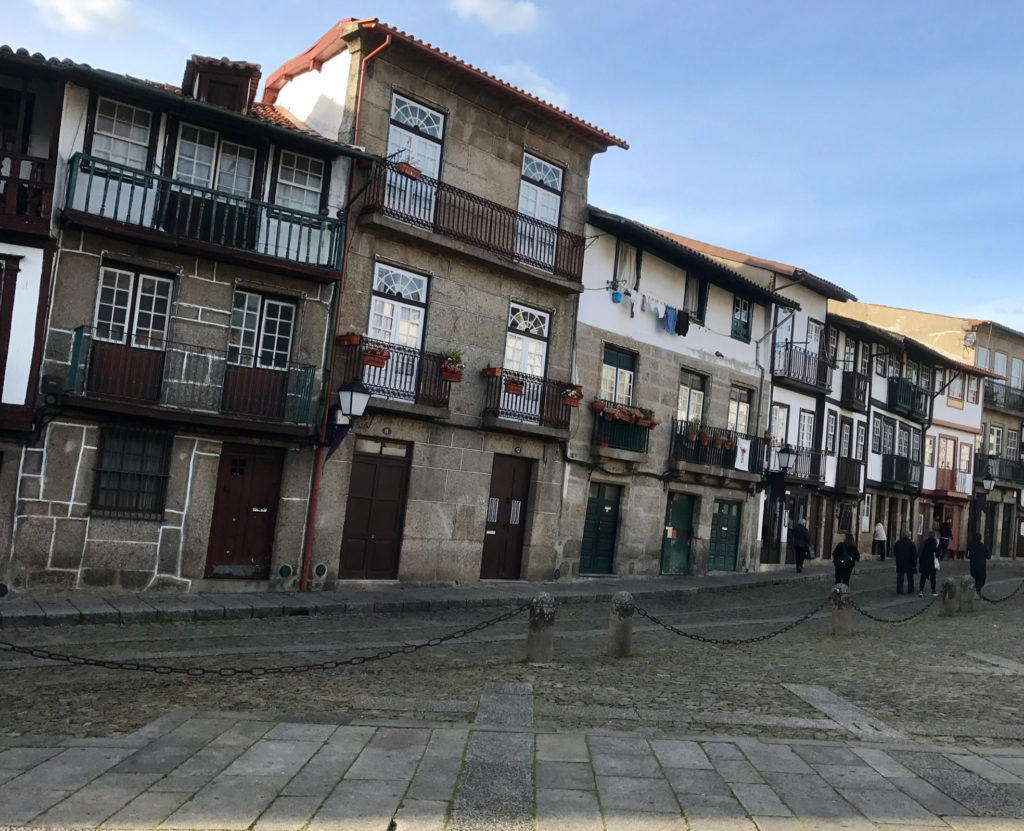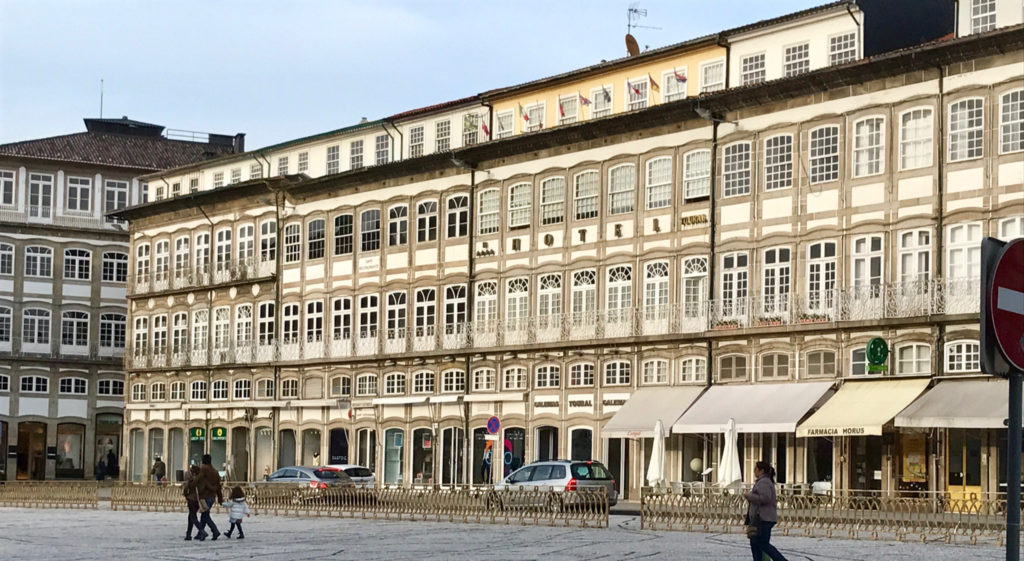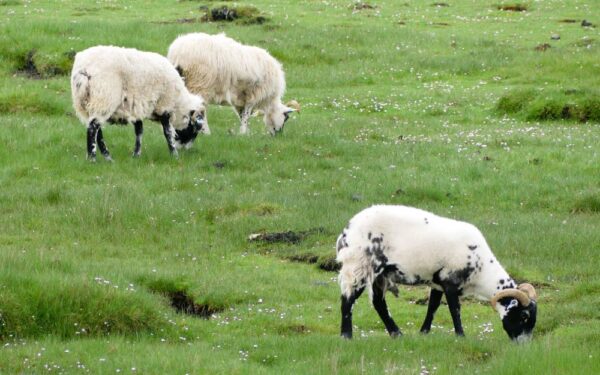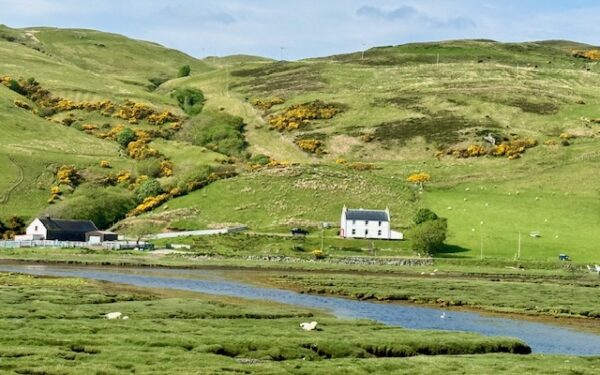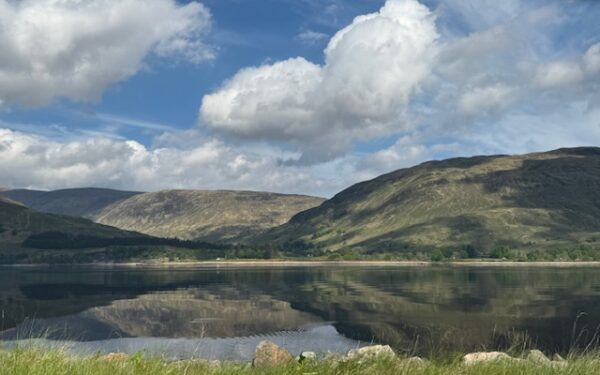“I’m into all that sappy stuff – a surprise picnic, nice dinner, or traveling. I’m kind of an old romantic.” Will Estes
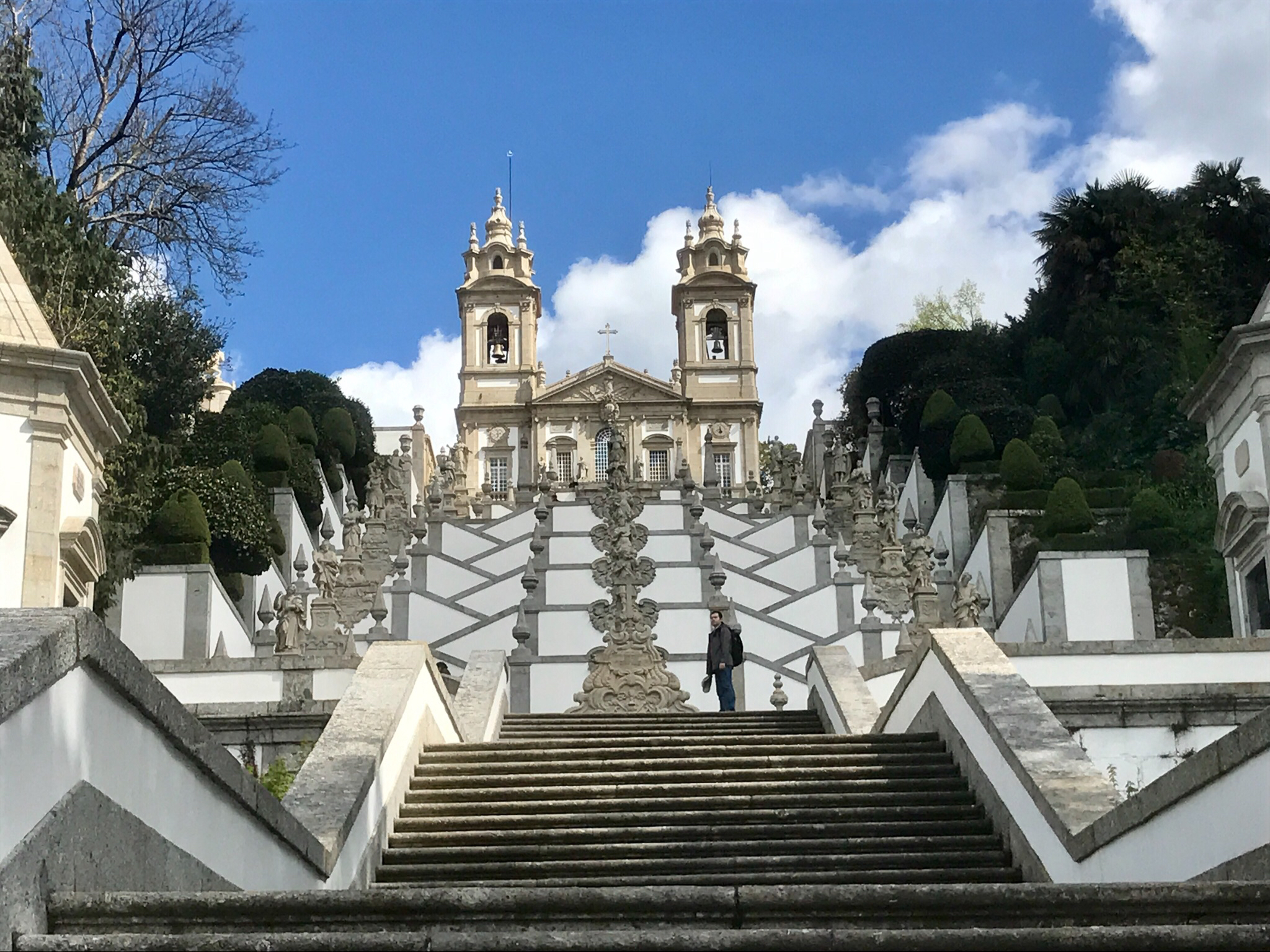
Mar 21, 2017
Today we left Evora, on our way to Guimares, the Grao Vasco Museum will have to wait for our next visit it does not open till 2 pm on Tuesday, and we can’t hang around we still have more of Portugal to discover.
The drive to our first site will take us about 2 1/2 hours again through the beautiful landscape, of lush green valleys and rocky mountain passages……this country matches Switzerland on the beauty of its landscapes.
Our first stop high on a hill overlooking the city of Braga was the Bom Jesus do Monte a sanctuary, it’s name means Good Jesus of the Mount.
The Sanctuary is a pilgrimage site with a monumental, Baroque stairway that climbs 381 feet. As the pilgrims climbed the stairs, (by tradition encouraged to do so on their knees) they encountered a theological program that contrasted the senses of the material world with the virtues of the spirit, at the same time as they experienced the scenes of the Passion of Christ. The culmination of the effort is the temple of God, the church on the top of the hill. The presence of several fountains along the stairways gives the idea of purification of the faithful.
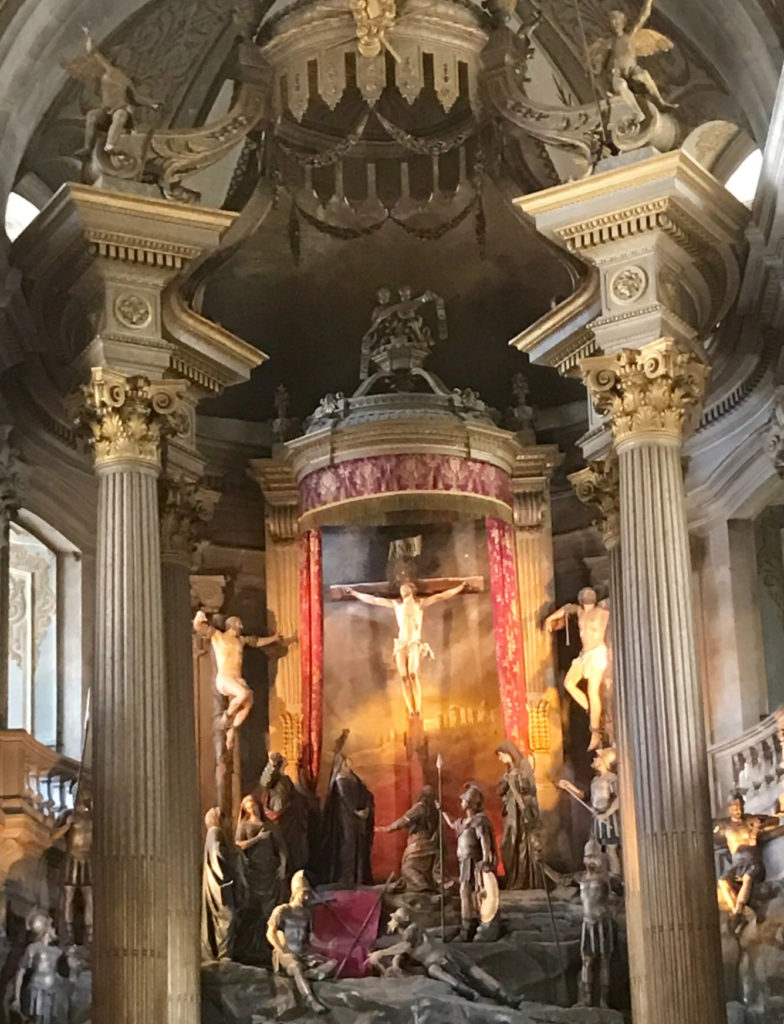
The first stairway row, with chapels dedicated to the Via Crucis, was completed. Each is decorated with terra cotta sculptures depicting the Passion of Christ. The next segment of stairways, which has a zigzag shape and is dedicated to the Five Senses. Each sense (Sight, Smell, Hearing, Touch, Taste) is represented by a different fountain. The third stairway also follows a zigzag pattern and is dedicated to the Three Theological Virtues: Faith, Hope, and Charity, each with its fountain. The church was one of the first Neoclassic churches of Portugal, consecrated in 1834 and elevated to Basilica status in 2015 by Pope Francis.
Its altar a representation of the crucifixion done in life size sculptures, making you experience a truly OMG moment.
In the 19th century, the area around the church and stairway was expropriated and turned into a park. In 1882, to facilitate access to the Sanctuary, the water balance funicular was built linking the city of Braga to the hill. It was the first funicular to be built in the Iberian Peninsula and is still in use.
It runs every hour so we just climbed down and climbed up all the stairways, good exercise as we rewarded ourselves with a picnic of bread, cheese, dates, and jam with a beautiful panoramic view of the city below.
Next stop our city for the night…..
Guimarães Its historic town center is listed as UNESCO World Heritage Site since 2001, in recognition for being an exceptionally well-preserved and authentic example of the evolution of a medieval settlement into a modern town in Europe.
The city was settled in the 9th century and has significant historical importance due to the role it played in the foundation of Portugal. The city is often referred to as the “birthplace of the Portuguese nationality” or “the cradle city” because it is widely believed that Portugal’s first King, Afonso Henriques, was born here and also due to the fact that the Battle of São Mamede daughter near its wall is the seminal event for the foundation of the Kingdom of Portugal.
We visited two of it most important sites of the city and wonder lost through its old city.
The Palace of the Dukes of Braganza or Paço dos Duques is a medieval estate and former residence. The palace was built between 1420 and 1422 by Afonso, Count of Barcelos, the illegitimate son of John I of Portugal (and future Duke of Bragança), after his marriage to his second wife. His progeny would occupy the space until the Dukes of Braganza moved to Vila Viçosa, abandoning the palace. The 16th Century marked the beginning of the period of ruin, which was aggravated during the 19th century when the local population used the palace as a personal quarry.
During the Estado Novo regime, a controversial restoration restored the Palace, while implying a grandeur that may not have existed. The Palace of the Dukes was classified as a National Monument in 1910 and has been an official residence for the Presidency.
The austere interior spaces include simple granite walls with ceilings and floors in wood. The museum space, consists of the towers and halls with rock fireplaces, including the Salão de Banquettes (Banquet Hall) and the Salão dos Passos Perdidos (“Hall of Lost Steps”), with roofs designed like the interior wooden keel of a boat.
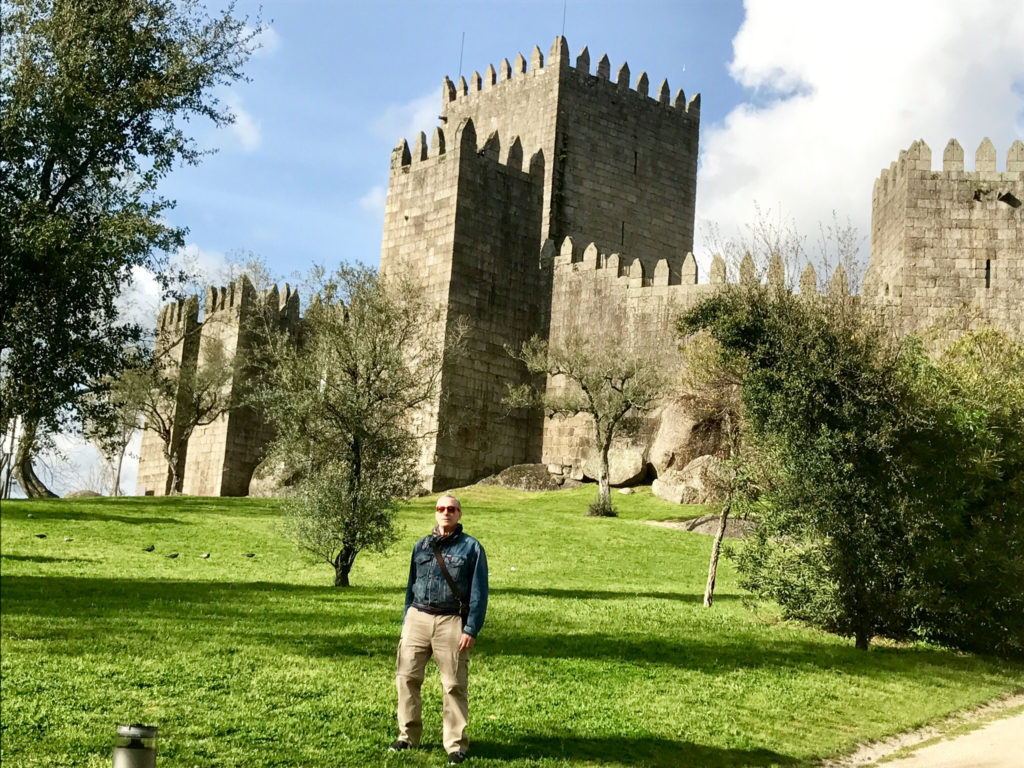
The top floor, of the palace dedicated to the use of the President of the Republic, and is characterized by a succession of bedrooms with private bathrooms, between two suites located within the towers.
The Castle of Guimarães was built in the 10th century to defend the monastery from attacks by Moors and Norsemen.
The castle was a military fortification grounded primarily in the late Romanesque period and elaborated during the early Gothic epoch of Portuguese architecture. Its area is delineated by walls forming a pentagram, similar to a shield, that includes eight rectangular towers, a military square,s, and a central keep.
By 1836, the councilmen of Guimarães were looking to demolish the castle, and reuse the stone to repave the roadways, this was never carried out and In 1910, the castle was declared a national monument.
The first attempts at restoration occurred during the mid-20th century, specifically in 1936. The structure was re-inaugurated in 1940.
We walked down from the castle to the old part of the city and aimlessly roamed its narrowed cobblestones streets looking up its painted houses and balconies and its facades in tiles, some simple, some ornate and truly a feast for the eyes, window shop in tiny stores selling a variety of goods, our main goal was to reach its main plaza.
This delightful plaza contains some of the best-preserved gothic architecture found in the city and includes the old town hall, the Church of the Colegiada, and the monument to the battle of Salado. The small plaza is surrounded by traditional painted houses and is filled with open-air cafes and a great little ice cream parlor……yummy.
Our hotel for the night once a magnificent Augustinian Monastery and then a residence for Portuguese royalty. Now, a Pousada Mosteiro de Guimarães’ hushed halls play host to a luxury hideaway high above the hills of the city with a panoramic view.
We follow in the footsteps of its former residents through ornamental gardens and peaceful cloisters. Discover its refined restaurant. Our converted cell, this one 3 times what we experienced in Evora, is filled with French regency furniture in taupe floral decor, giving you the feeling of stepping back in time. We walked through the Great Hall, Old Library, and Chapter Room, admiring the 18th-century tiles and soaring oak ceilings. The bar housed in what was once the monastery kitchen has a huge fireplace and snug sofas and an outdoor terrace for warm evenings, not tonight.
Tomorrow with move to Porto and plan to visit their most important wine region the Douro Valley.
